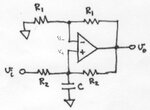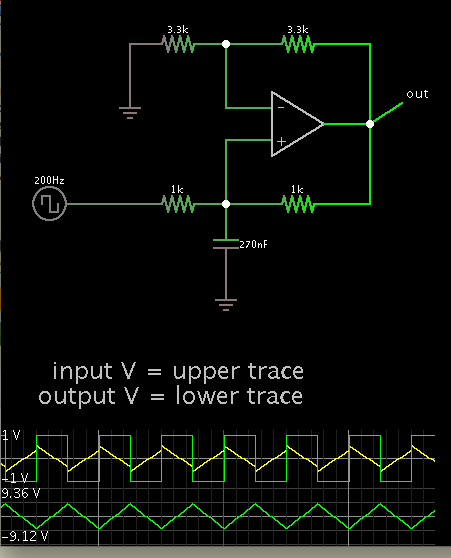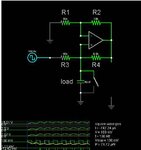znoopie
Newbie level 3
It is given that the input node vi has low impedance and the output node vo has high impedance. The question is "What does this circuit do?".
Assuming that op-amp's gain is very large, I computed the transfer function and got vo/vi = 2/(s*R2*C), which is an integrator or a low-pass filter.
However, I'm still skeptical about the information on the input/output impedance. I thought it would affect the circuit's function in some way. Help or comments are appreciated.
Thanks in advance.
Assuming that op-amp's gain is very large, I computed the transfer function and got vo/vi = 2/(s*R2*C), which is an integrator or a low-pass filter.
However, I'm still skeptical about the information on the input/output impedance. I thought it would affect the circuit's function in some way. Help or comments are appreciated.
Thanks in advance.


